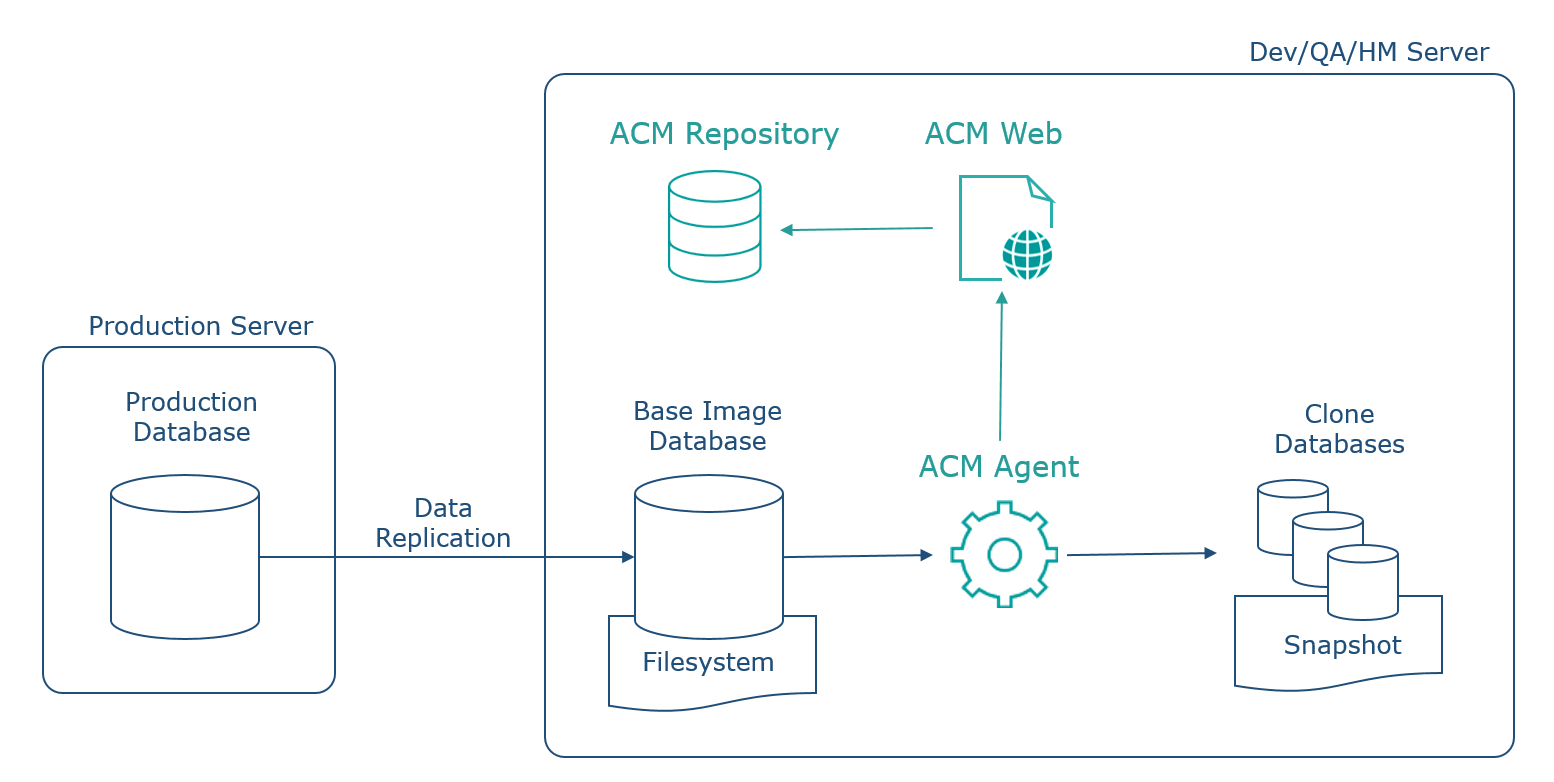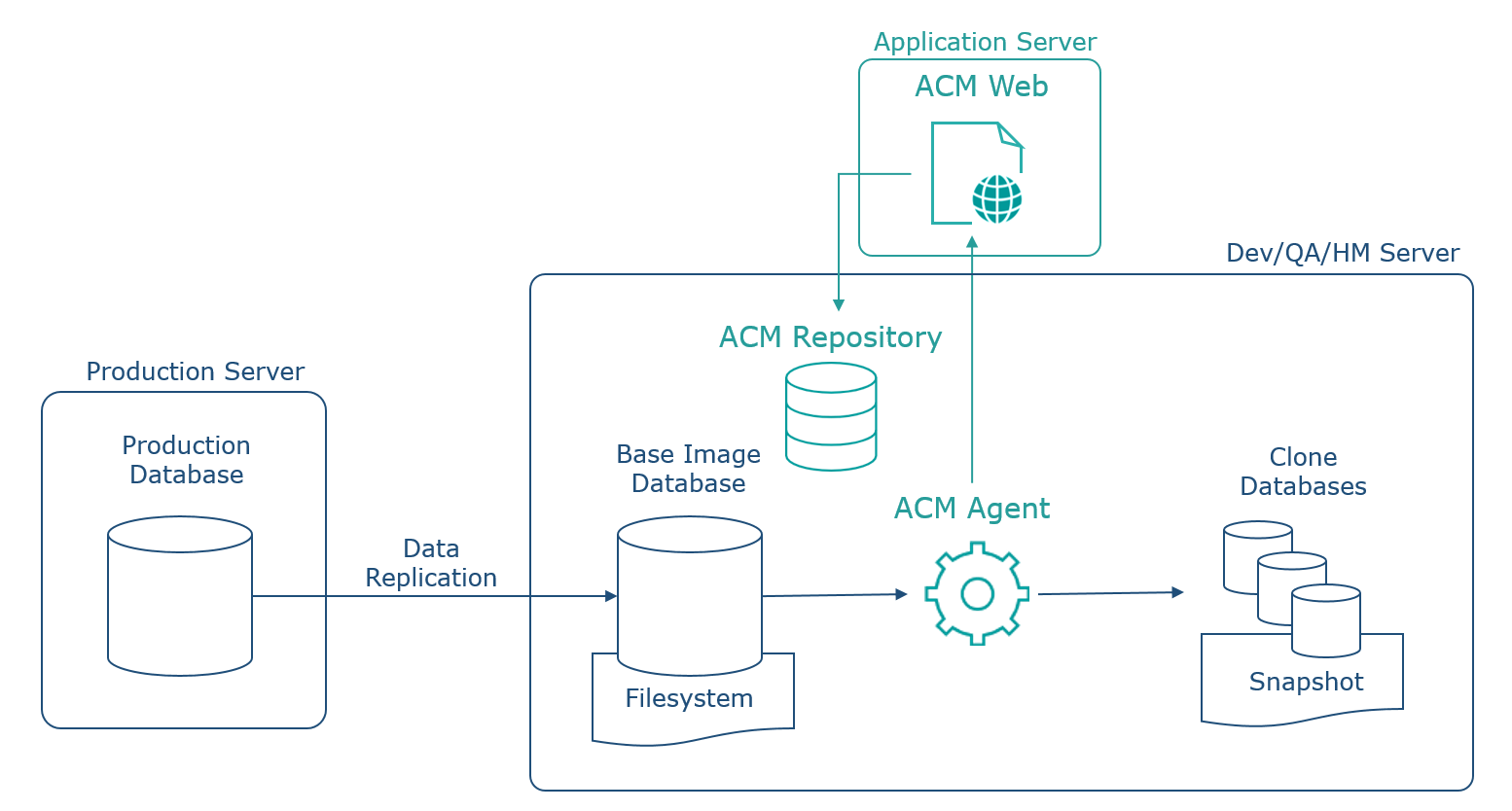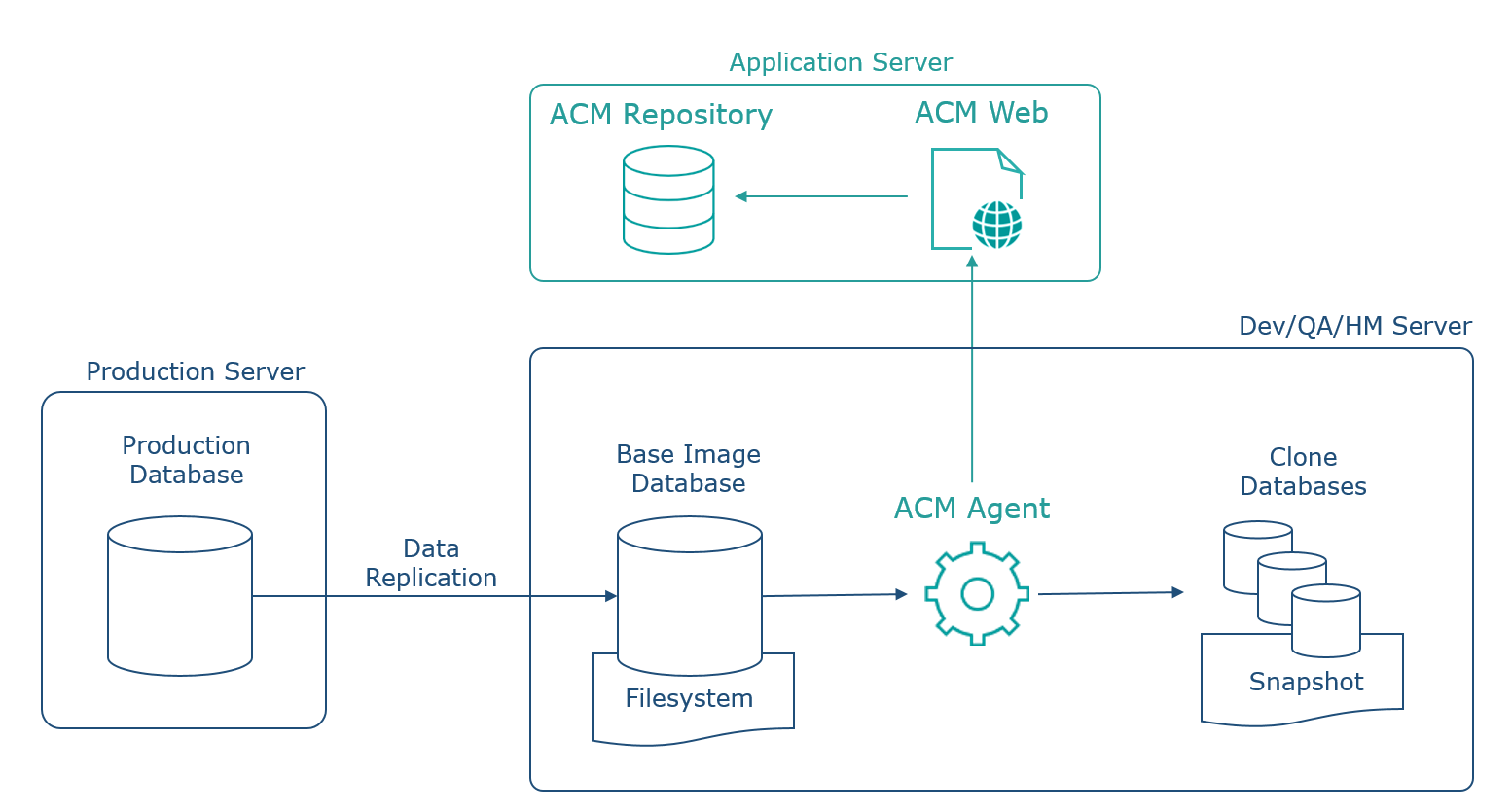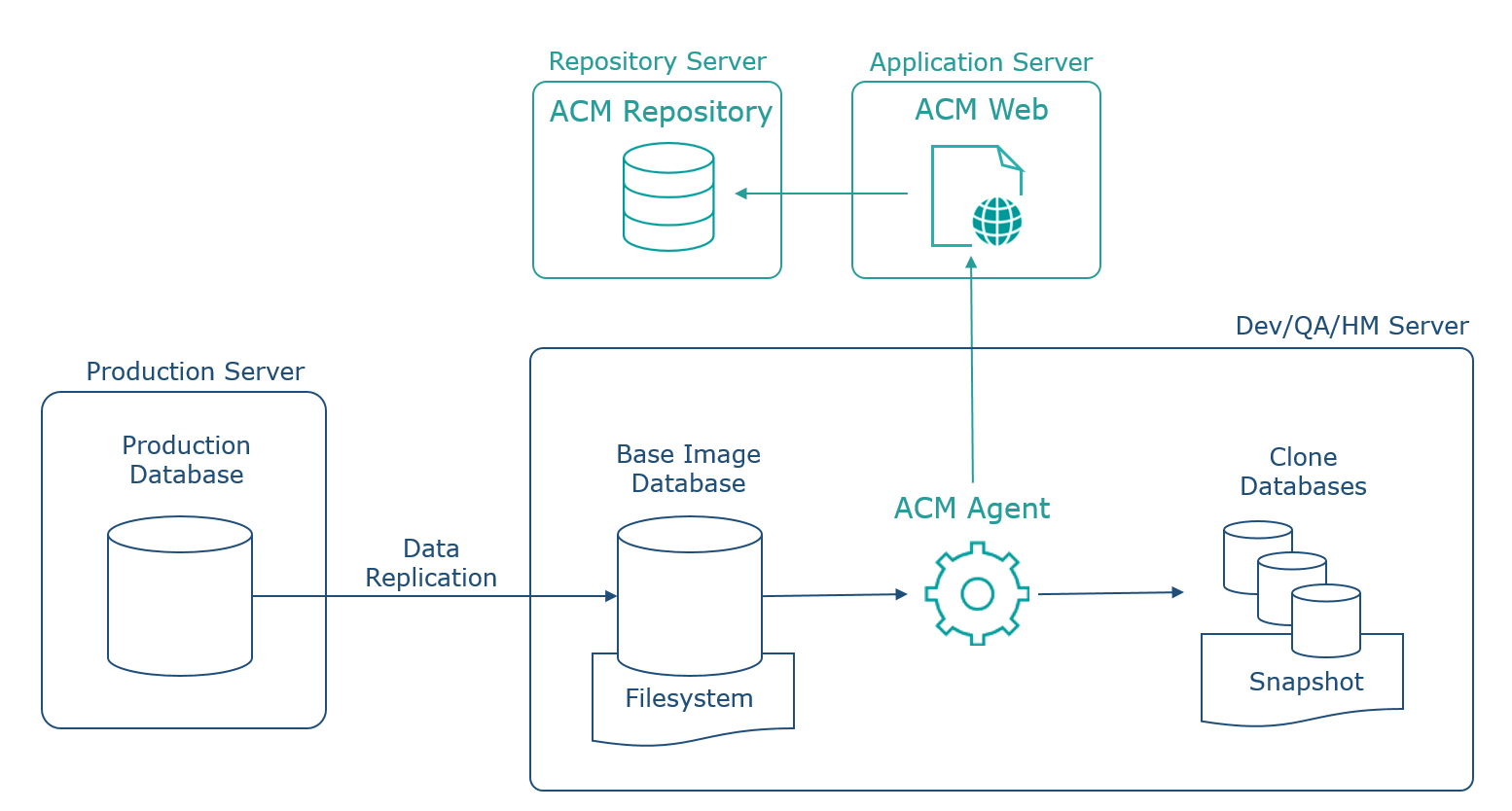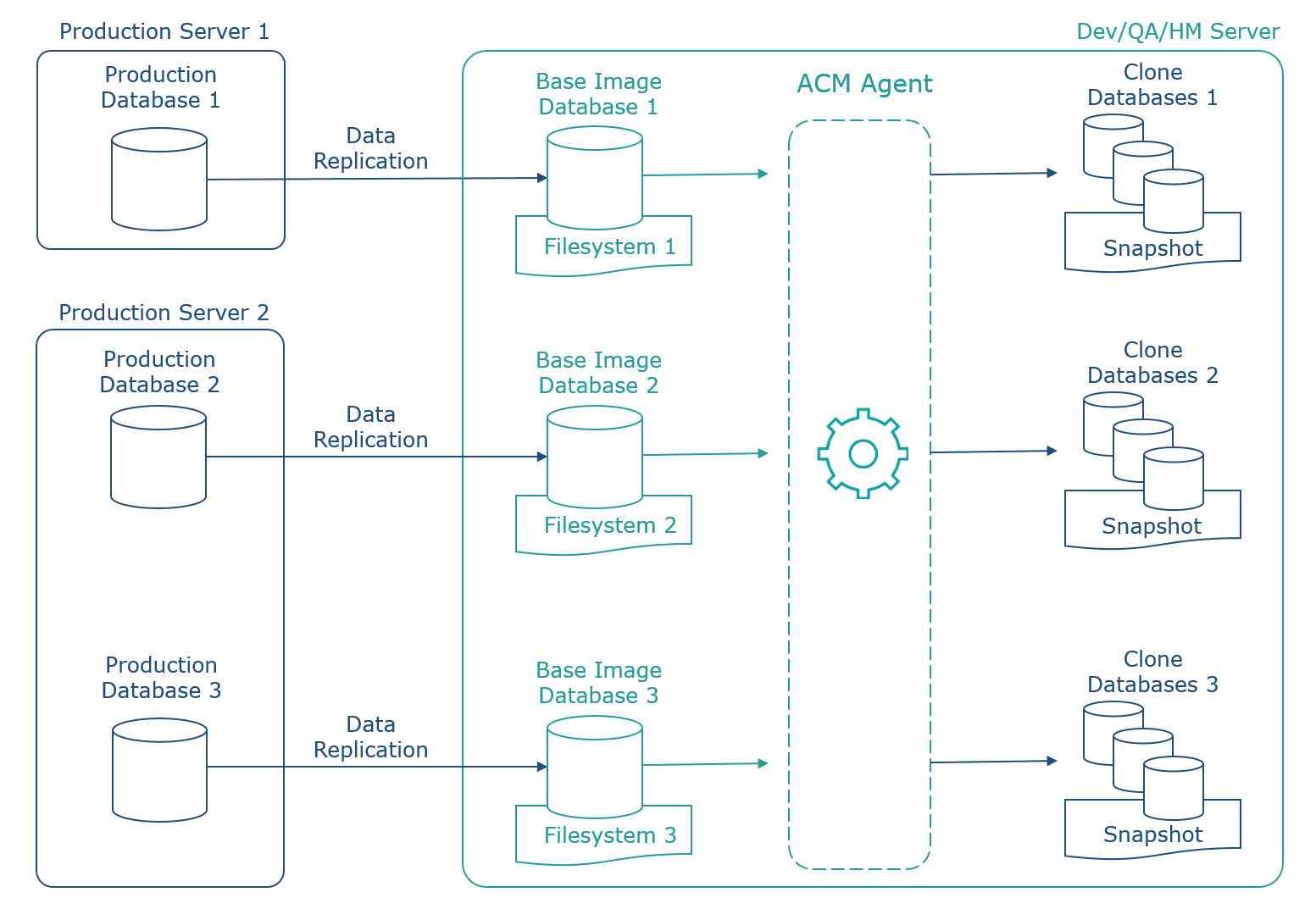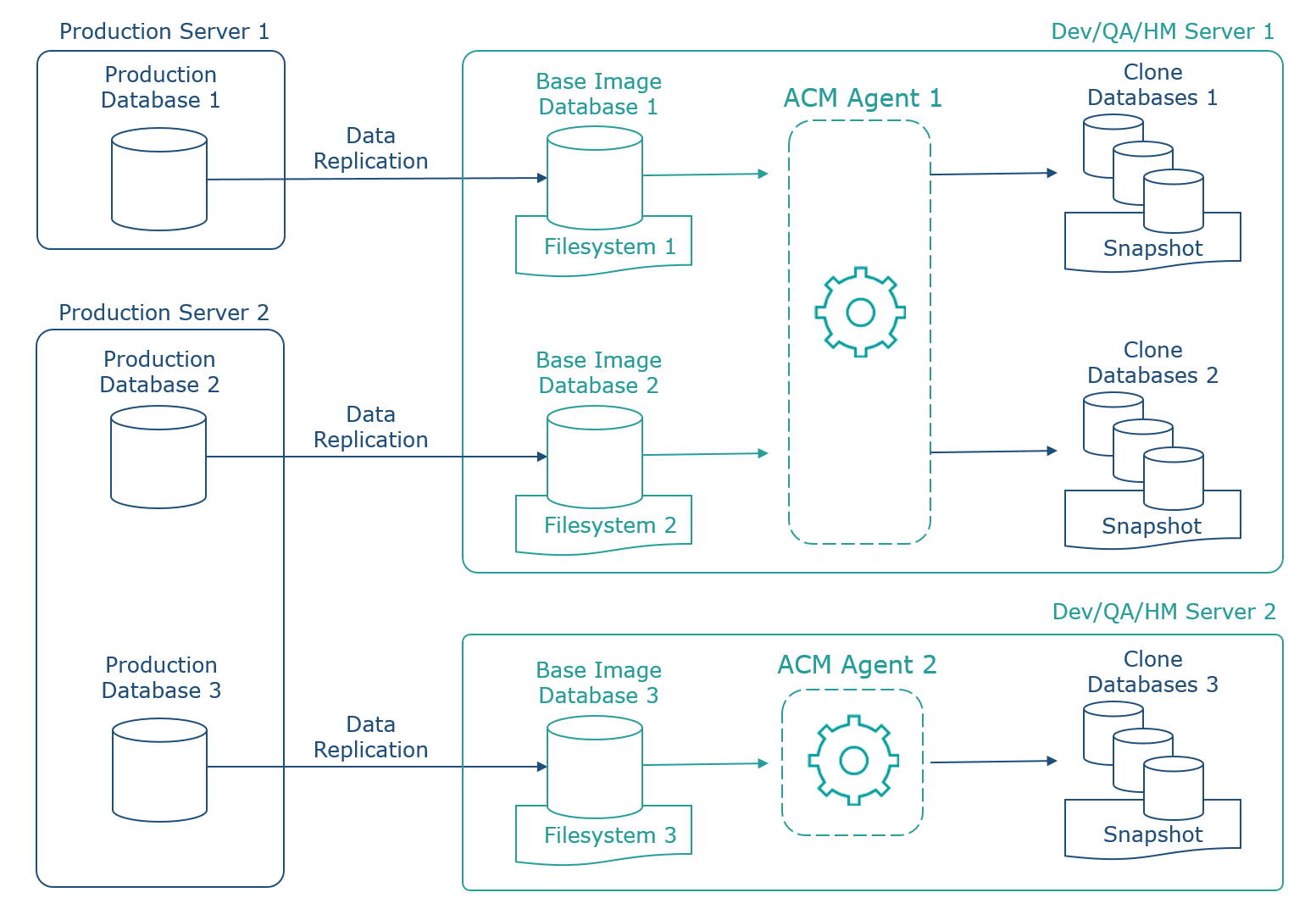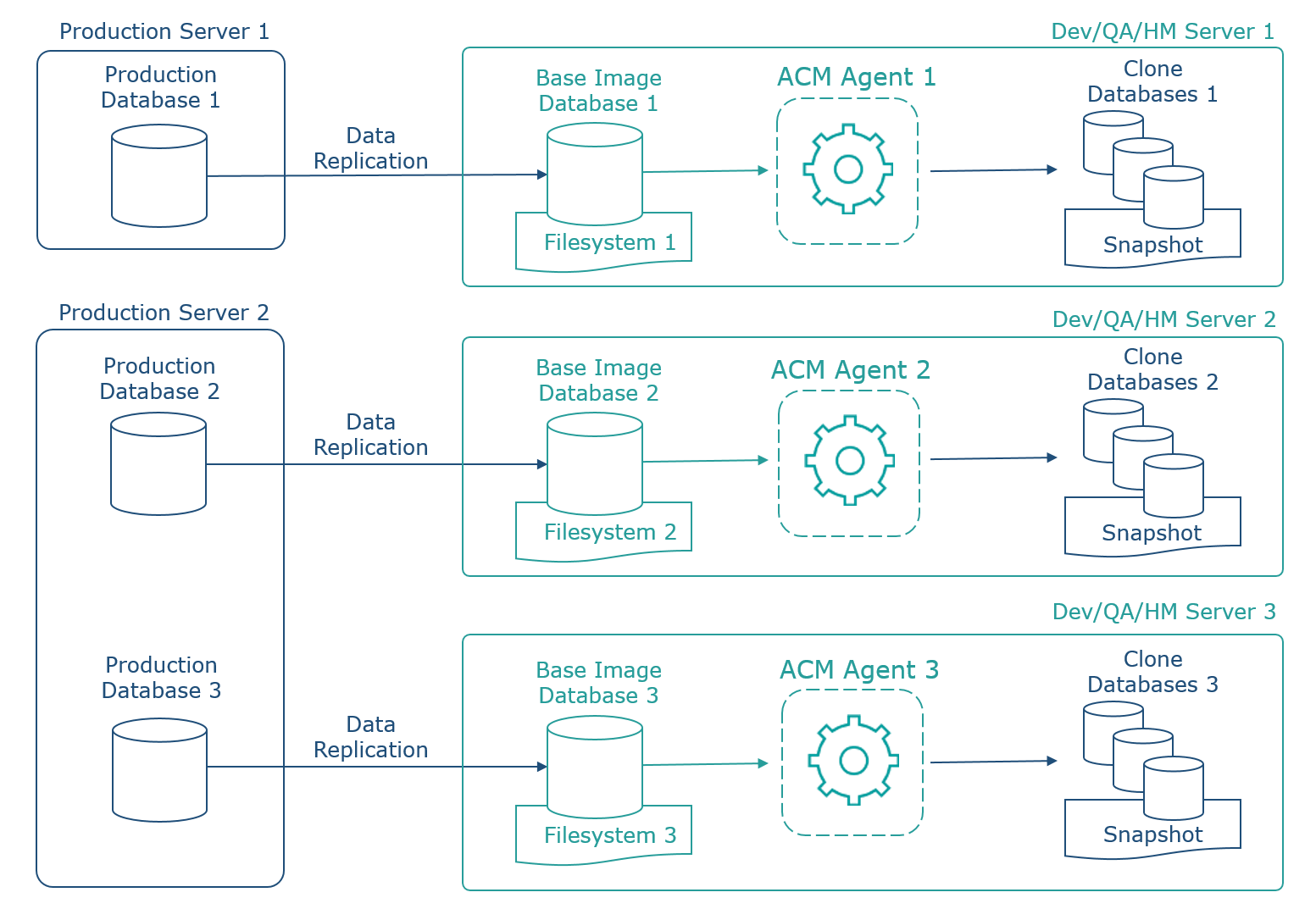This chapter covers the following:
|
ACM fully virtualizes database copies (clones). With complete virtualized database clones, the test data is identical to the production data with low space consumption, allowing the creation of as many clones as needed for testing purposes. Through ACM self-service console or the RESTful APIs, database clones can be provisioned in minutes, making quality test data available for your agile implementation model or any other test purposes. The following topics will guide you through the main technical features and the architecture needed to implement and use ACM. You can also see an executive overview and a case study in the Note: Along this documentation, some parts of this architecture overview will be used as reference to better understand the setup stages of ACM. |
|
It is an agent that works in background mode on all Dev / QA / HM servers that will host a base image database. Regardless of the number of base image databases that you have on the same server, you should have only one ACM Agent. It is responsible for the communication between server and ACM Web, processing all requests, releasing the orchestrations for creating, maintaining and removing snapshots and database clones. This is the front end application that users will access to make all configurations and requests for snapshots and clones. Through it is possible to manage multiple ACM Agents on different servers, ensuring ease and agility to users. It has a dashboard that allows you to monitor your entire environment in a single view. Working together with ACM Web this is the application data repository, or to be more clear, it is a database to store ACM data configuration. That repository must be an Oracle Database Standard or Enterprise Edition version 11G or high. The server where ACM Repository is installed must be properly licensed with Oracle Database license. Oracle Database license is not part of the ACM solution, please consult your Oracle Database vendor to keep your server properly licensed. It is a real and constantly updated copy of your production database. Each master database can only be synchronized with one production database. The mechanism responsible for maintain the production and master database synchronized. The data replication is not provided and configured by ACM installation. This is a requirement for ACM operation that currently supports only Oracle Dataguard replication. It is the database production server. ACM does not access or make any activity in this server. The database used by production application. It must be an Oracle Database version 10G or high. ACM does not access or make any activity in this database. It is the development, QA, homologation, certification and User Acceptance Testing (UAT) server that will host your base image databases, clone databases and the ACM Agent. Linux x86 and Solaris operating systems are supported. This server must be Oracle Grid Infrastructure version 12C or high. That server must be properly licensed with Oracle Database license. Oracle Database license is not part of the ACM solution, please consult your Oracle Database vendor to keep your server properly licensed. It is the file storage system where the base image databases must be located to enable the creation of clone databases. Each base image database must be in its own filesystem, it is not possible to share this area with other base image database. This filesystem must be an Oracle Automatic Storage Management Cluster File System (Oracle ACFS) version 12C or high. The "point in time" snapshot from the filesystem where the base image database is hosted, that will allow the database clones to be created with data from the production database in a specific period of time. The snapshot works with the copy on write technology, which means that only the changed blocks will generate space consumption, reducing considerably the space used by database clones. The replicas of a base image databases in a specific period of time. Each clone database is independent, that is, the data changed in a specific database clone will only be reflected in this database. Other clone database in the same server will not be affected. |

|
|
This is the source production database which ACM will provide virtual clones. The only configuration needed in this layer is related to the vendor replication method. Currently, Oracle physical Dataguard is the only replication method supported by ACM and it is not covered in this documentation, please check the third party Oracle documentation to setup it. Make sure to use Dataguard in max performance mode (the network I/O attribute should be ASYNC and the disk I/O attribute should be NOAFFIRM) to avoid any performance impact on the production layer. There is no impact on production since synchronization is done through transaction logs already applied in production. This is the only full physical copy of production database needed. Before you setup this master database (In-Sync Base Image) using Dataguard, you must follow the below steps: 1. Calculate the space needed for the master database and the expected simultaneos virtualized clones using ACM recommendation. 2. Check configuration and parameters recommendation to get the best out of performance. 3. Setup the destination filesystem where the master database and virtualized clones will reside. Note: Currently, Automatic Storage Management Cluster File System (Oracle ACFS) is the only datafile location for the master database supported by ACM. Make sure to setup all physical dataguard datafiles inside the ACFS, if needed, use Oracle parameters options to convert datafile from source path to the ACFS destination path. Eg: DB_CREATE_FILE_DEST, DB_FILE_NAME_CONVERT, LOG_FILE_NAME_CONVERT, etc. From this stage on, multiples snapshots and database clones use the same base image to full virtualize data. Provisioning of large space volumes is no long required since this is a base image virtualization. Space is only allocated in writing operations to maintain the delta in relation to Base image. Optionally, sensitive data is identified, classified and treated by Anonymization or Pseudonymization to meet regulatory requirements. To use this option, an ACM Data Mask license is required, contact ASM sales support to get more information. Databases are identical to the production, except sensitive data treated as your choice. For administrators, applications, developers and all other users, this is a regular database as any other physical one. |
|
